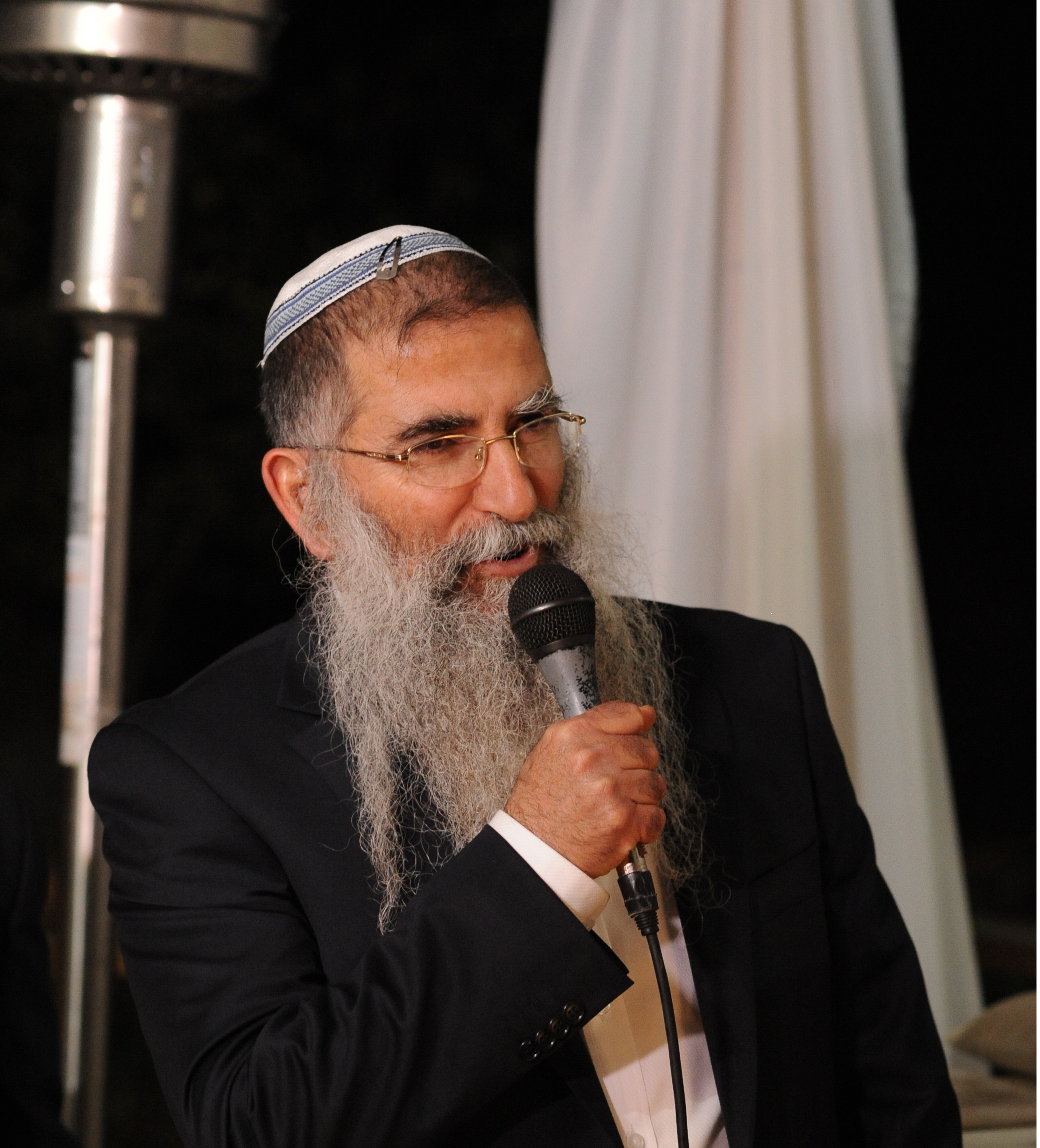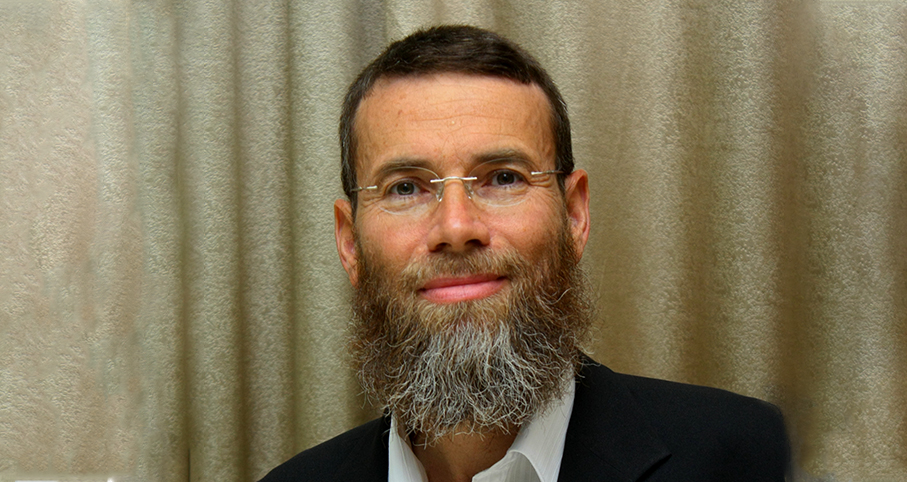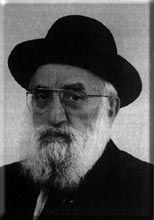Beit Midrash
- Shabbat and Holidays
- The High Holidays
- The Month of Elul
Though quite different, the customs among Sephardi and Ashkenazi Jews in the month of Elul leading up to the High Holy Days are directed to the same summit of teshuvah, repentance. And a note on the Haaretz Newspaper.
The late Chief Sephardic Rabbi Ovadiah Yosef noted a custom in some non-Hassidic circles not to get married in the month of Elul. The basis for it is the serious nature of the days leading up to the New Year coronation of G-d as King and the Day of Atonement. Rabbi Yosef had strong criticism of this custom, however, terming it strange and inexplicable. And in fact it is hard to find a month that is more appropriate for the mitzvah of marriage than Elul, which is an acronym for Ani L'dodi v'dodi li, expressing the love between G-d and the Jewish nation.
This appears to be a fine example of the differences between the Sephardim, who are often lenient, and the more stringent Ashkenazim, as I explained in my recent article entitled, "Why Sephardim are Happier." I wrote there that the Sephardic mourning customs during the Three Weeks before Tisha B'Av are notably less stringent than those of Ashkenaz. This is seemingly related to the general Sephardic optimism regarding the Redemption, compared to the Ashkenazi measure of pessimism on this topic. Since marriage is a type of personal redemption for the young couple, as is clear from the words of the Seven Blessings of the wedding meals, we see that each group, or part thereof, is consistent in its own approach to the idea of holding weddings during the Three Weeks.
This is why it is surprising to see the opposite in the month of Elul. While the Sephardim arise very early every day this month to recite the penitential s'lichot prayers, the generally stringent Ashkenazim do not join in until just a few days before Rosh HaShanah. Until then, their preparations for the Days of Awe suffice with a few seconds of shofar-blowing every morning, and the recitation of Psalm 27, L'David Hashem Ori V'yish'i, "Hashem is my light and my salvation" night and day. Does this not demand an explanation?
It turns out that while the Ashkenazim are lenient in their actions, they are quite stringent when it comes to the content thereof. Their custom of blowing the shofar is a striking introduction and powerful preparation for the Day of Judgement, Rosh HaShanah. (This is why after Rosh HaShanah, we no longer blow the shofar.)
On the other hand, the s'lichot of the Sephardim, while recited at a difficult hour of the day, are replete with comfort and Divine attribute of mercy. They are a great preparation for the Day of Forgiveness, Yom Kippur, on which G-d as if moves from the Throne of Judgement to the Throne of Compassion. The s'lichot express our request for atonement, a central part of teshuvah. The Sephardim thus have it "easy" in that sense, while the Ashkenazim are the more stringent.
Ever since the destruction of the Holy Temple, instead of the Atonement sacrifices and service, the s'lichot have become the centerpiece of our Yom Kippur prayers. On Rosh HaShanah, on the other hand, there are no s'lichot, and not even confession; it is a day of judgement, not of requests for forgiveness.
In any event, the atmosphere of this month of Elul is a complex one. We are still in the midst of the Seven Weeks of Consolation following the mourning period over the Temple's destruction; the haftarot that both Sephardim and Ashkenazim recite on these Sabbaths are full of prophetic consolation for Zion. It is a month that well represents the typical Jewish oxymoron, "Rejoice with trembling" (Psalms 2,11). On the one hand, we happily anticipate Redemption and the rectification of the world, both collectively and individually. On the other hand, Elul is accompanied by fears and anxiety as it brings us closer to the day we stand before the Divine Throne of Judgement that determines what will befall us this coming year. Elul is the sixth month of the year, the preparation for Tishrei – just as Friday is the day of preparation for the Sabbath.
In truth, the Sephardim do not totally ignore the Shofar before Rosh HaShanah. They blow it every morning more than once, during the recitation of the Thirteen Attributes of Mercy during the s'lichot prayers. In addition, all Jewish congregations read aloud the Torah portion of Ki Tavo shortly before Rosh HaShanah, which includes a series of intense rebukes and punishments for our not having kept the Torah. The verse "Will a shofar be sounded in the city and the people not tremble?" (Amos 3,6) is also quite familiar to their congregations.
We therefore see that the ends meet in this instance. Everyone experiences a multi-dimensional Elul, full of the sometimes contradictory emotions of hope, joy, and the fear of judgement.
Both Sephardim and Ashkenazim seeking during these days to reach the pinnacle of teshuvah. This is why the haftarot of consolation are replaced after Rosh HaShanah with the "two haftarot of teshuvah" – one on the Fast of Gedaliah immediately after Rosh HaShanah, and the second on Shabbat Shuvah before Yom Kippur (see the first Tosafot on Megillah 31b). The two haftarot of teshuvah are connected to those of consolation that precede them: The Redemption of the nation and the redemption of each individual are two sides of the same coin; the former, which is hidden within the consolation of Zion and Jerusalem, is the introduction to the redemption of each individual soul at these times.
About this the Rambam wrote: "Israel is redeemed only via teshuvah – but the Torah has promised that Israel will ultimately do teshuvah at the end of their Exile, at which time they will immediately be redeemed." (Laws of Teshuvah 7,5)
Haaretz
On a related topic, I would like to note that my article, cited above, received attention in the Haaretz newspaper – by, of all people, an Israeli Druze poet named Salman Masalha. He actually displayed an amazing knowledge of Jewish Law, discussing the differences between Sephardic and Ashkenazi rulings and quoting Rav Ovadiah and the renowned 18th-century Chida (Rav Yosef Chaim David Azulai). Masalha took the opportunity to mock the Jews for their inter-ethnic disputes. I responded with a Letter to the Editor, praising Masalha's breadth of knowledge and offering to write a parallel article on the differences between Shiite and Sunni Muslims and the hundreds of thousands of deaths caused by them. The "newspaper for thinking people" published the first part of my letter, but for some reason omitted the second part. I therefore thought I would note it here.
Translated by Hillel Fendel






















